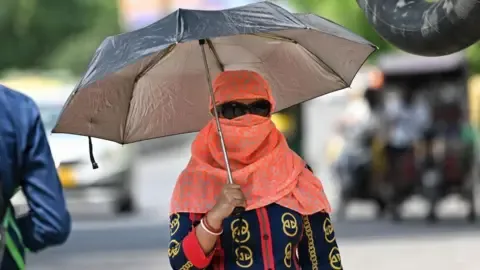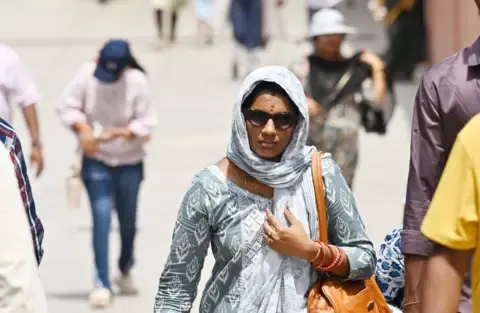A devastating heatwave has struck India’s Uttar Pradesh and Bihar states, claiming the lives of at least 96 people, mostly in a single district. The scorching temperatures, coupled with humidity, have pushed the death toll to alarming levels, with more than half of the fatalities reported in the Ballia district. “No relief is expected in the next 24 hours,” said Atul Kumar Singh, a scientist from the India Meteorological Department.
The extreme heat, which has reached temperatures of 45C (113F) over the past few days, has made it difficult for many Indians to go about their daily lives. With few resources to combat the heat, millions of people are left to fend for themselves, often under the blistering sun with only a wet cloth wrapped around their heads.
The majority of deaths in Uttar Pradesh have been attributed to heat-aggravated conditions, although officials are puzzled by the unusual number of fatalities in Ballia. The deaths may have been caused by other factors, including contaminated water, but the exact cause remains unclear. Dr. AK Singh, a member of the team sent to Ballia by the state government, stated that the symptoms were not typical of heat-related deaths.

Footage from the government hospital in Ballia shows overcrowded wards and understaffed medical facilities, with patients complaining of high fever, vomiting, diarrhoea, and breathing difficulties. Opposition parties have criticized the chief minister, Yogi Adityanath, for the inadequate medical facilities in the area, forcing families to carry their sick relatives to hospital themselves due to a lack of stretchers.
Human-caused climate change is driving more frequent and deadly weather disasters worldwide, including heatwaves, floods, and wildfires. India, with its vast population of 1.4 billion, is particularly susceptible to severe weather events, often resulting in water shortages and displacement. The desert state of Rajasthan has been recently affected by torrential rain, with villages, roads, and railway tracks submerged.
The rollercoaster weather India has experienced this year, with unusually high temperatures in February, heavy rain in March, and exceptionally cool weather in May, has also contributed to the dire situation. As the country struggles to cope with the aftermath of this disaster, it is essential to acknowledge the long-term implications of climate change and take proactive measures to mitigate its effects.

